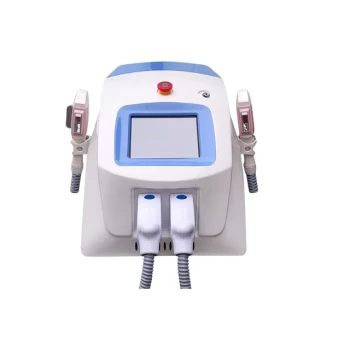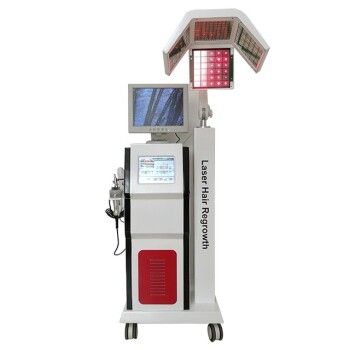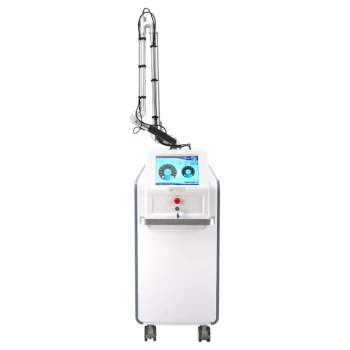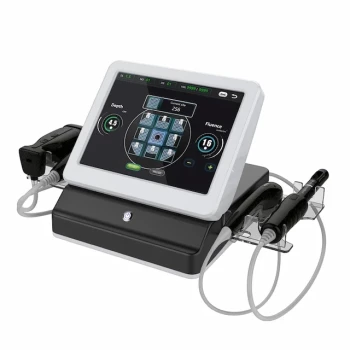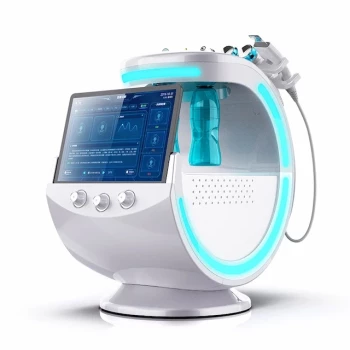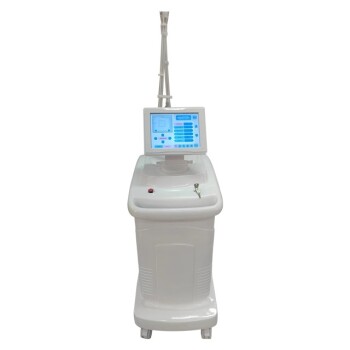For permanent hair reduction, laser is the more effective technology. While both Intense Pulsed Light (IPL) and laser use light to destroy hair follicles, laser devices use a single, concentrated wavelength of light that is optimized for hair removal. This precision generally leads to faster, more effective, and more permanent results with fewer treatment sessions compared to IPL.
While both technologies rely on light to heat and disable hair follicles, the nature of that light is the critical difference. Laser's precision makes it a specialized tool for hair removal, whereas IPL's broader light is a multi-purpose tool, making it inherently less focused and less potent for this specific task.
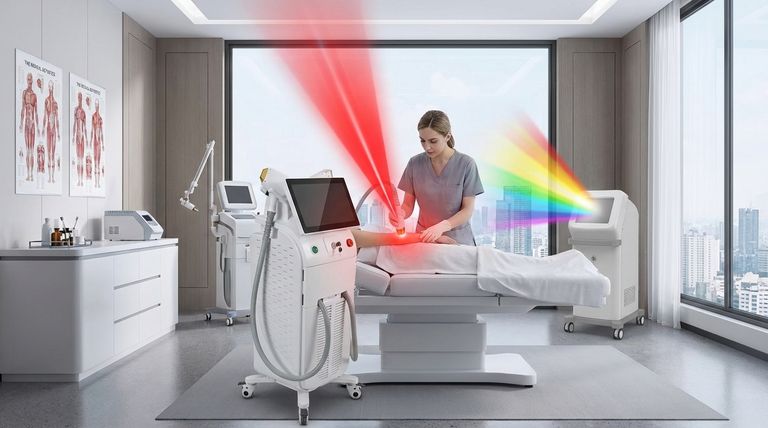
How Each Technology Actually Works
To choose the right treatment, you must first understand the fundamental difference in how they function. The "better" option becomes clear when you see how each type of light interacts with your skin and hair.
The Laser Approach: A Concentrated Beam
A true hair removal laser emits a single, highly concentrated wavelength of light. Think of it as a laser pointer, where all the energy is focused into one precise, powerful beam.
This single wavelength is specifically chosen to be absorbed by the melanin (pigment) in the hair follicle. The energy travels down the hair shaft, converts to heat, and destroys the follicle's ability to grow new hair, with minimal impact on the surrounding skin.
The IPL Approach: A Dispersed Flash
IPL is not a laser. It produces a broad spectrum of light with multiple wavelengths, similar to the flash from a camera. This light is scattered and less concentrated.
Because IPL uses many different wavelengths, not all of the energy is effectively absorbed by the hair follicle. A significant portion is absorbed by the surrounding skin and tissue, making each treatment less efficient for hair removal and increasing the risk of side effects on certain skin types.
The Critical Factor: Hair and Skin Tone
The effectiveness and safety of any light-based hair removal are dictated by the contrast between your skin tone and your hair color.
The Principle of Contrast
Both technologies work best when there is a high contrast between the skin and the hair—for example, dark hair on fair skin. The light energy is designed to seek out melanin, and this contrast ensures it targets the hair follicle instead of the skin.
Why Laser Is More Adaptable for Different Skin Tones
Modern laser systems are highly advanced. Different types of lasers (like Nd:YAG or Diode) use specific wavelengths that are safer for darker skin tones.
These longer wavelengths can bypass the melanin in the epidermis (the top layer of skin) and penetrate deeper to target the hair follicle directly. This significantly reduces the risk of burns or pigmentation issues for individuals with more melanin in their skin.
The Risk of IPL on Darker Skin
Because IPL uses a broad spectrum of light, it cannot distinguish between the melanin in your hair and the melanin in your skin as effectively as a laser.
For individuals with tan or dark skin, this makes IPL a riskier option. The scattered light is more likely to be absorbed by the skin itself, which can lead to burns, blisters, or post-inflammatory hyperpigmentation (dark spots).
Understanding the Trade-offs
Choosing between IPL and laser isn't just about effectiveness; it's also about understanding the practical differences in the treatment experience.
Efficacy and Speed
Laser is the clear winner here. Because its energy is so concentrated, it typically requires fewer sessions (often 6-8) to achieve significant, long-term hair reduction. Results are often visible more quickly.
IPL's dispersed energy means it is less powerful for this specific purpose. It often requires more treatments (sometimes 10-12 or more) and may not achieve the same degree of permanent hair removal as a laser.
Treatment Versatility
This is where IPL has a different purpose. The broad spectrum of light is effective at treating other skin conditions like sun spots, broken capillaries, and rosacea. Some may see this as an added benefit, but it underscores that IPL is not a specialist tool for hair removal.
Cost and Accessibility
Per session, IPL treatments can sometimes be less expensive than laser treatments. However, the total cost may end up being similar or even higher due to the greater number of sessions required for a comparable result. At-home hair removal devices are almost exclusively IPL, but operate at a much lower power level, requiring consistent, long-term use for minimal suppression rather than permanent reduction.
Making the Right Choice for Your Goal
Your decision should be based on your primary objective, skin type, and hair color.
- If your primary focus is maximum permanent hair reduction: Laser is the superior, more direct, and more effective path, especially if you have a medium to dark skin tone.
- If your primary focus is treating mild hair growth alongside other issues like sun spots or redness: IPL can be a viable option, but only if you have fair skin and dark hair (high contrast).
- If your primary focus is the lowest initial cost: At-home IPL is the cheapest entry point, but you must accept that the results will be far less effective and permanent than professional treatments.
Understanding the fundamental difference between a focused laser beam and broad-spectrum IPL light empowers you to choose the most effective tool for your specific hair removal goals.
Summary Table:
| Feature | Laser Hair Removal | IPL (Intense Pulsed Light) |
|---|---|---|
| Technology | Single, concentrated wavelength | Broad spectrum of light (not a laser) |
| Best For | Permanent hair reduction | Mild hair reduction & skin concerns (e.g., sun spots) |
| Ideal Skin/Hair | All skin tones (with correct laser); best on dark hair | Fair skin with dark hair only (high contrast) |
| Typical Sessions | 6-8 for significant results | 10-12+ for comparable results |
| Key Advantage | Precision, faster results, safer for darker skin | Lower initial cost; treats some skin issues |
Ready to offer your clients superior, permanent hair removal results?
BELIS specializes in professional medical aesthetic equipment, serving medical aesthetics clinics and premium beauty salons. Elevate your service offerings with our advanced laser hair removal systems, designed for maximum efficacy and safety across all skin types.
Contact our experts today to discover the right professional solution for your business and clientele.
Visual Guide
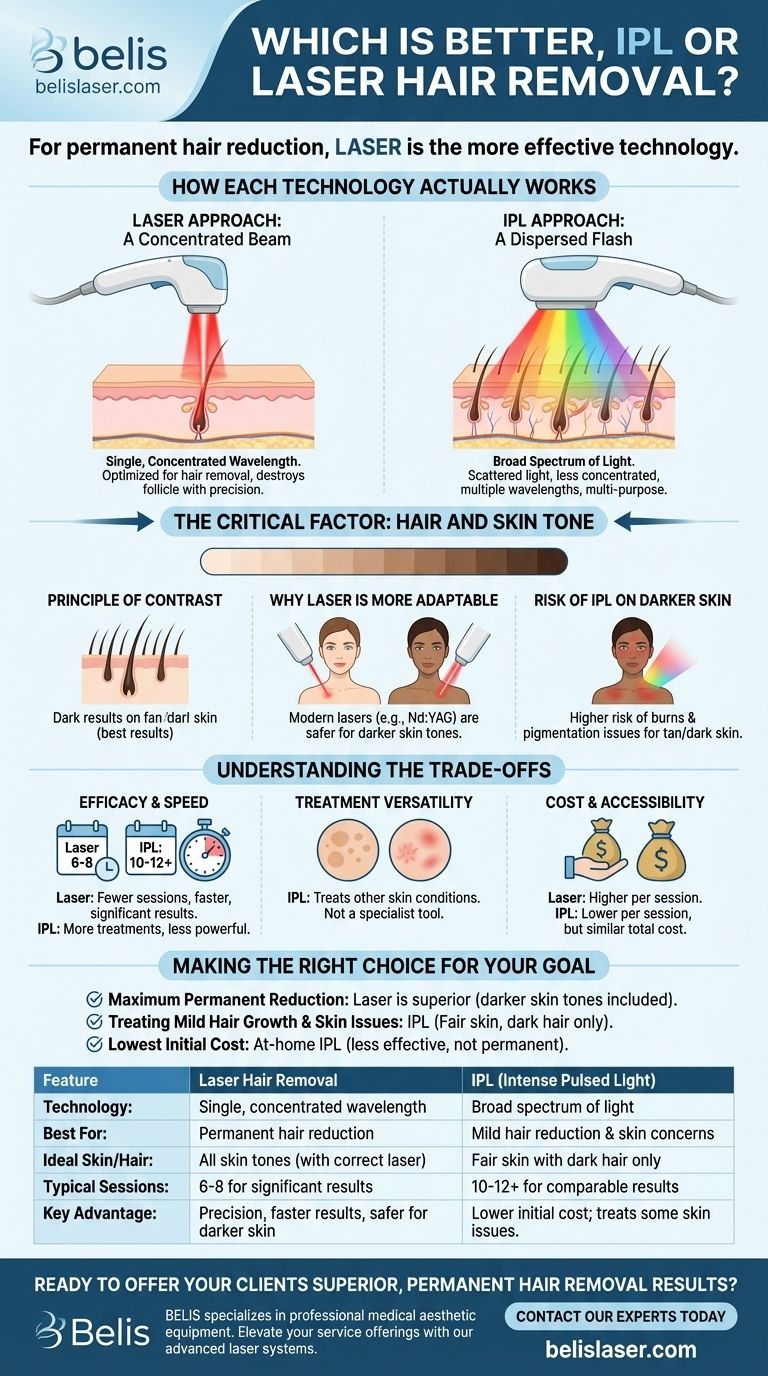
Related Products
- Diode Tri Laser Hair Removal Machine for Clinic Use
- Diode Laser SHR Trilaser Hair Removal Machine for Clinic Use
- Clinic Diode Laser Hair Removal Machine with SHR and Trilaser Technology
- Trilaser Diode Hair Removal Machine for Beauty Clinic Use
- Clinic Use IPL and SHR Hair Removal Machine with Nd Yag Laser Tattoo Removal
People Also Ask
- How can I maximize my laser hair removal results? A Guide to Optimal Treatment and Safety
- How to get better results from laser hair removal? Achieve Smooth, Long-Lasting Hair Reduction
- How to get the most out of laser? Maximize Your Hair Removal Results Safely
- How often should you get laser hair removal for best results? The 4-6 Week Rule Explained
- What is the best way to remove hair from sensitive areas? A Guide to Pain-Free, Irritation-Free Results





